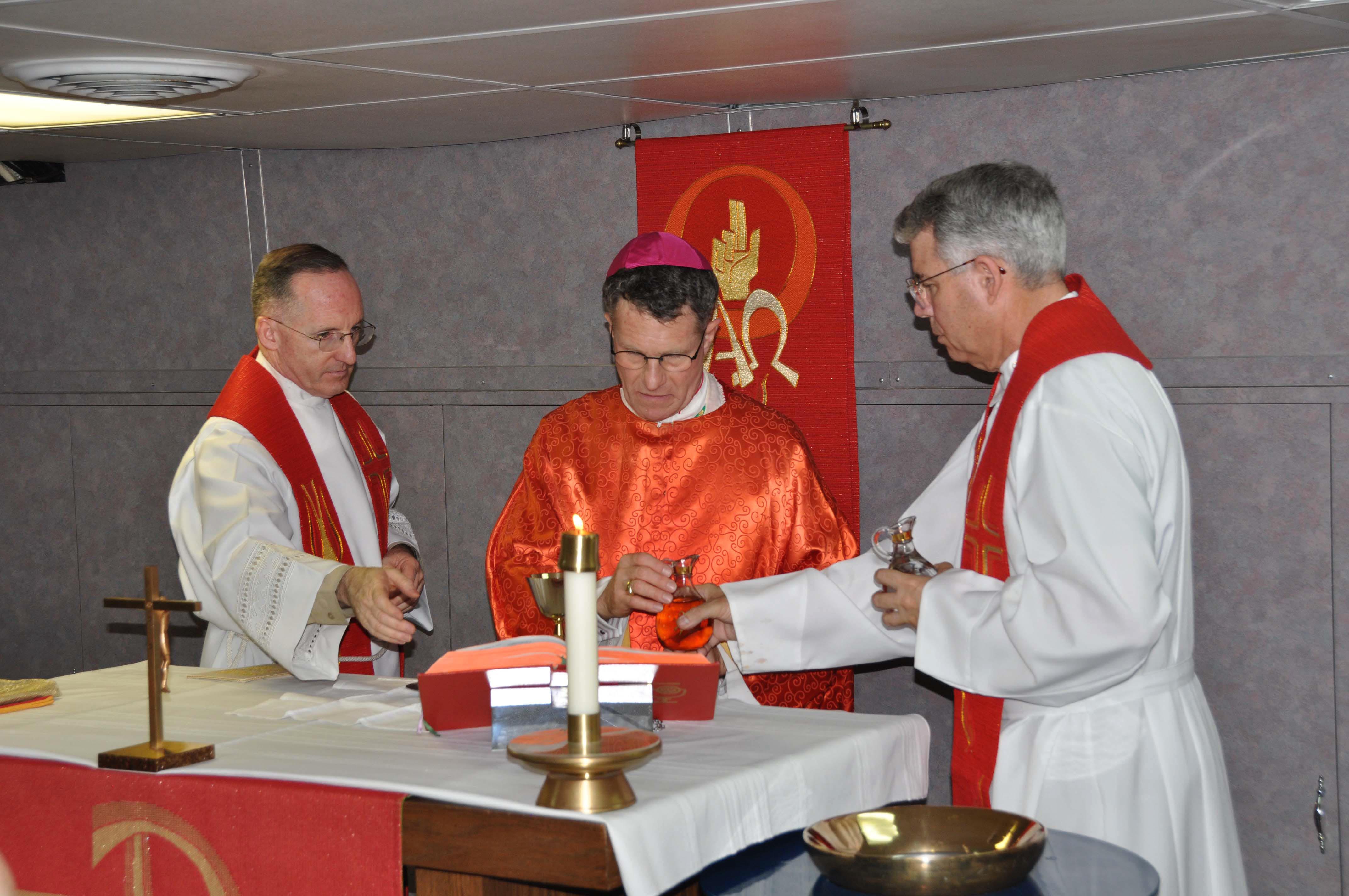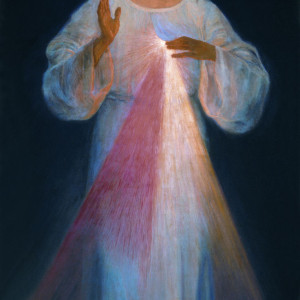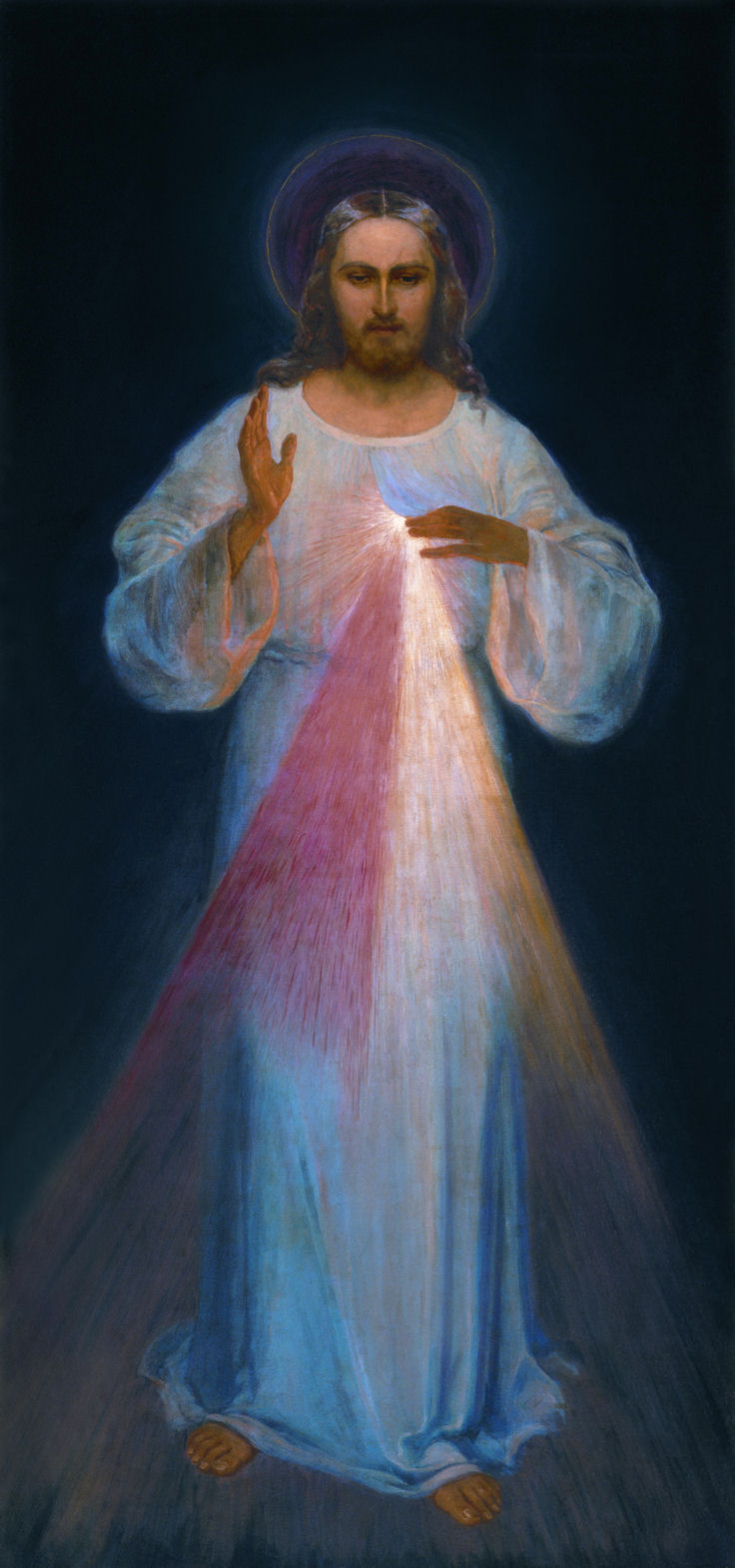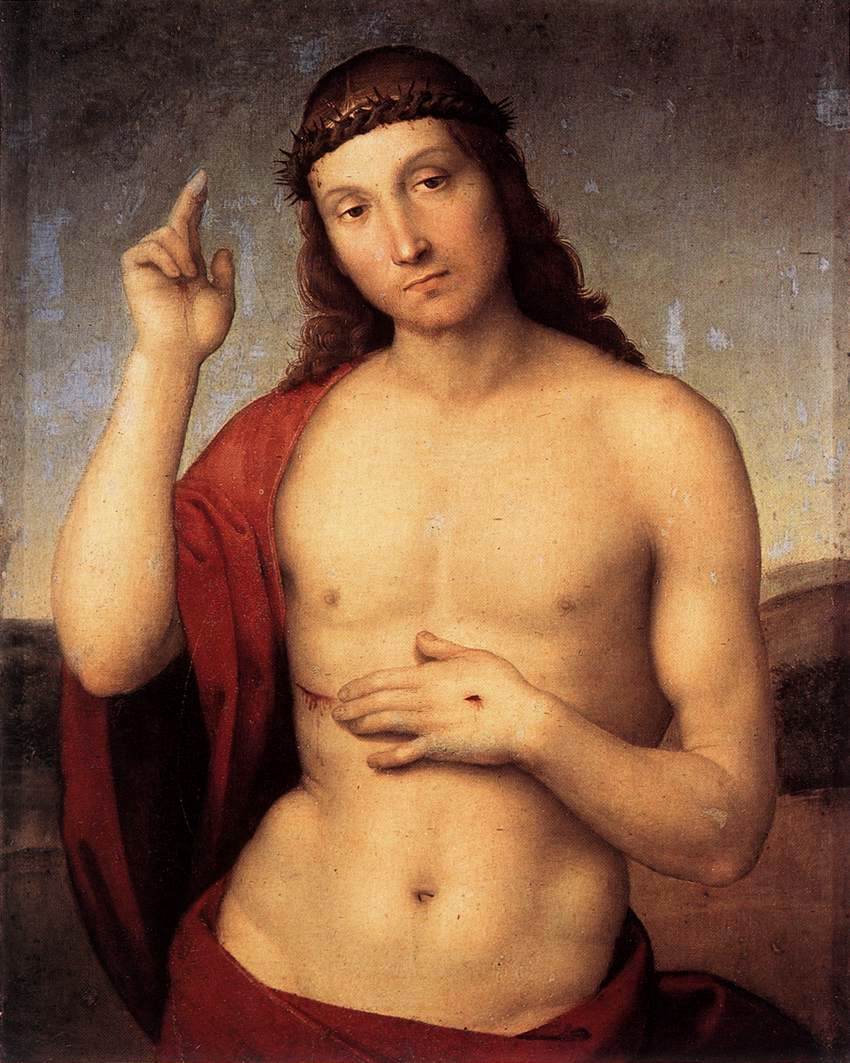When we switched to the new translation of the Mass this past Advent, much was said about the fact that now, when the priest says, “The Lord be with you,” we respond, “and with your spirit,” instead of “and also with you.” In a 2005 newsletter announcing this change, the USCCB explained:
Eugeniusz Kazimirowski,
Divine Mercy (1934)Where does this dialogue come from?
The response et cum spiritu tuo is found in the Liturgies of both East and West, from the earliest days of the Church. One of the first instances of its use is found in the Traditio Apostolica of Saint Hippolytus, composed in Greek around AD 215.
How is this dialogue used in the Liturgy?The dialogue is only used between the priest and the people, or exceptionally, between the deacon and the people. The greeting is never used in the Roman Liturgy between a non-ordained person and the gathered assembly.
Why does the priest mean when he says “The Lord be with you”?By greeting the people with the words “The Lord be with you,” the priest expresses his desire that the dynamic activity of God’s spirit be given to the people of God, enabling them to do the work of transforming the world that God has entrusted to them.
What do the people mean when they respond “and with your spirit”?The expression et cum spiritu tuo is only addressed to an ordained minister. Some scholars have suggested that spiritu refers to the gift of the spirit he received at ordination. In their response, the people assure the priest of the same divine assistance of God’s spirit and, more specifically, help for the priest to use the charismatic gifts given to him in ordination and in so doing to fulfill his prophetic function in the Church.
 |
| Abp. Boglio celebrating Mass aboard the USS Nimitz |
What you may not have known, though, is that bishops don’t say “The Lord be with you.” Instead, they say, “Peace be with you” (Pax vobiscum). I’d wondered why, but never read up on this. Yesterday, I learned the answer.
Since it was Divine Mercy Sunday, I went to the Basilica of the National Shrine of the Immaculate Conception, where Abp. Broglio of the Archdiocese of Military Services was celebrating a special Mass entrusting the men and women of the armed services to Jesus.
He began with the “Peace be with you,” and then explained that this comes from the Hebrew greeting Shalom, but more particularly, from the manner in which Jesus uses it. Yesterday’s Gospel saw Him use this greeting three times (John 20:19-21, 26):
On the evening of that first day of the week, when the doors were locked, where the disciples were, for fear of the Jews, Jesus came and stood in their midst and said to them, “Peace be with you.” When he had said this, he showed them his hands and his side. The disciples rejoiced when they saw the Lord. Jesus said to them again, “Peace be with you. As the Father has sent me, so I send you.” [….]
Now a week later his disciples were again inside and Thomas was with them. Jesus came, although the doors were locked, and stood in their midst and said, “Peace be with you.“
This greeting, according to the NAB footnotes, is tied to Christ’s promise to leave us His Peace (John 19:27). With that in mind, consider these instructions from St. Ignatius of Antioch, writing c. 107 A.D. to the Smyrnaeans:
Raphael, Christ Blessing (1505) Flee from schism as the source of mischief. You should all follow the bishop as Jesus Christ did the Father. Follow, too, the presbytery as you would the apostles; and respect the deacons as you would God’s law. Nobody must do anything that has to do with the Church without the bishop’s approval. You should regard that Eucharist as valid which is celebrated either by the bishop or by someone he authorizes. Where the bishop is present, there let the congregation gather, just as where Jesus Christ is, there is the Catholic Church. Without the bishop’s supervision, no baptisms or love feasts are permitted. On the other hand, whatever he approves pleases God as well. In that way everything you do will be on the safe side and valid. It is well for us to come to our senses at last, while we still have a chance to repent and turn to God. It is a fine thing to acknowledge God and the bishop. He who pays the bishop honor has been honored by God. But he who acts without the bishop’s knowledge is in the devil’s service.
St. Ignatius was a student of the Apostle John, and this text shows that, contrary to modern claims about the rise of the Catholic Church, an incredibly high view of the clergy (and specifically, the episcopacy) existed from the Apostolic age.
But it does more than that. It also shows why it’s fitting that the bishop should greet us with the words of Christ, while the priests use the words of the Apostles (), a subtle reminder that the bishop along enjoys the fullness of the sacrament of holy orders, being more perfectly configured to the Person of Jesus Christ than even a priest. And finally, it’s a nice reminder at the painstaking and loving manner in which the Mass is imbued with layers upon layers of meaning: that even something as simple as the form of greeting should speak volumes about the Church’s sacramental understanding, and to call to mind, from the first moment of the Mass, Jesus and the Apostles.



Peace be with you – Pax Vobiscum or Pax Vobis.
Cool information. Thanks!
What does a Bishop say before the Gospel if he’s reading it, in the absence of a Deacon or another priest?